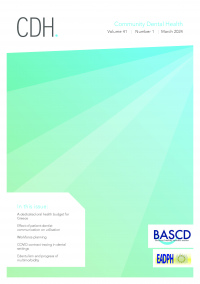March 2013
Oral health literacy comparisons between Indigenous Australians and American Indians
Abstract
Objectives: To compare oral health literacy (OHL) levels between two profoundly disadvantaged groups, Indigenous Australians and American Indians, and to explore differences in socio-demographic, dental service utilisation, self-reported oral health indicators, and oral health-related quality of life (OHRQoL) correlates of OHL among the above. Methods: OHL was measured using REALD-30 among convenience samples of 468 Indigenous Australians (aged 17–72 years, 63% female) and 254 female American Indians (aged 18–57 years). Covariates included socio-demography, dental utilisation, self-reported oral health status (OHS), perceived treatment needs and OHRQoL (prevalence, severity and extent of OHIP-14 ‘impacts’). Descriptive and bivariate methods were used for data presentation and analysis, and between-sample comparisons relied upon empirical contrasts of sample-specific estimates and correlation coefficients. Results: OHL scores were: Indigenous Australians - 15.0 (95% CL=14.2, 15.8) and American Indians - 13.7 (95% CL=13.1, 14.4). In both populations, OHL strongly correlated with educational attainment, and was lower among participants with infrequent dental attendance and perceived restorative treatment needs. A significant inverse association between OHL and prevalence of OHRQoL impacts was found among American Indians (rho=-0.23; 95% CL=-0.34, -0.12) but not among Indigenous Australians. Conclusions: Our findings indicate that OHL levels were comparable between the two groups and lower compared to previously reported estimates among diverse populations. Although the patterns of association of OHL with most examined domains of correlates were similar between the two groups, this study found evidence of heterogeneity in the domains of self-reported OHS and OHRQoL. Key words: oral health literacy, oral health, Indigenous populations, Australian Indigenous, Native American, American Indian, quality of life




